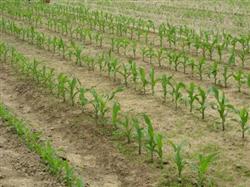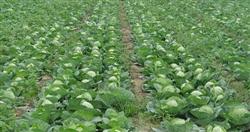How to control weeds in cotton fields?

How to control weeds in cotton fields? Please introduce the methods of planting cotton and refer to the following methods to control weeds: (1) the species and occurrence characteristics of weeds in cotton fields China is one of the largest cotton producing countries in the world, with Shandong, Hebei, Henan, Jiangsu, Hubei, New and Anhui provinces as the main cotton regions. There are more than 60 species of weeds in 24 families in cotton field, among which there are more than 60 species of weeds in Gramineae, such as Codonopsis grossedentata, Euphorbia angustifolia, Echinochloa paniculata, Euphorbia angustifolia, Cyperus officinalis, Cyperus officinalis, Artemisia mandshurica, Chenopodium gramineum, amaranth and abutilon. The damage of weeds is an important problem in cotton production. According to the sampling survey of the national farmland weed inspection group, the degree of grass damage in cotton fields is 47 million mu or above, accounting for 56% of the total cotton planting area. In the Yangtze River basin, the Yellow River basin and the northwest inland cotton area, the grass damage area of cotton field accounted for 82.7%, 75.2% and 81.0% of the planting area, respectively, and the moderate damage area was 61.7%, 50.0% and 44.0%, respectively. Nationwide, 14.8% of cotton was lost due to grass damage, reducing lint production by about 255000 tons. Some weeds are still the hosts of cotton diseases and insect pests, and the occurrence of weeds can increase the damage of cotton diseases and insect pests. The yield loss of cotton damaged by weeds is closely related to the species and density of weeds. Under the condition that the species and density of weeds are relatively unchanged, the yield reduction of cotton damaged by weeds is also closely related to the symbiosis time and different growth stages of weeds. According to the experimental results of Xinyang Farm in Jiangsu Province, weeds strongly inhibited the growth and development of cotton, and the damage intensified with the extension of symbiosis time. The cotton without weeding treatment from sowing to June 15 had 19.7% fewer leaves and 33.9% higher plant height than the treated cotton, forming thin, tall seedlings, and weeding also caused a serious reduction in yield. From sowing to August 25, there is no weeding, 66% shorter than the weeded cotton plant, 40.8% less leaves, 85.7% fewer fruit branches, 94.2% less fruit nodes, rarely blossoms and bolls, and even some cotton plants die under the cover of weeds, resulting in serious yield reduction or no harvest. In the cotton area of the Yellow River basin, with the rise of temperature in cotton sowing, many kinds of weeds in cotton field began to sprout one after another, and the first emergence peak was formed in the field in late May, which was dominated by Setaria mandshurica, Batang, paspalum, quinoa and so on. later, there will be a small peak of grass emergence with rainfall and irrigation. In July, with the arrival of the rainy season, a large number of weeds such as aconite were unearthed, forming the second peak of emergence. At the same time, the weeds unearthed in the early stage entered the peak period of growth, so it was easy to cause serious damage to cotton. For the cotton field covered with plastic film, because the soil temperature of the tillage layer is high, the soil moisture is better, and the change is small, it is more beneficial to the germination of weeds. Generally, weeds are unearthed one after another in 5-7 days after plastic film mulching. In the case of good soil moisture, the unearthed peak is formed in about 15 days. Although the unearthed peak is formed in a long and short time, the emergence of weeds is early and concentrated. (2) Control strategies of cotton weeds 1. Control of weeds in cotton seedbed in cotton seedbed, the main weeds are Setaria paniculata, Setaria angustifolia, Chenopodium quinoa, amaranth, and weeds are relatively easy to treat. Amide, dinitroaniline herbicides, ethoxyflurane, oxazone and other herbicides can be used in production. When applied before film mulching after sowing, 50% Acetochlor EC 50~75ml/ mu, or 72% Metolachlor EC 75~100ml/ mu, or 72% Metolachlor EC 75~100ml/ mu, or 33% dimeglin EC 75~100ml/ mu, or 50% Acetochlor EC 50ml/ mu + 24% Acetochlor EC 10ml/ mu or 12% Acetochlor EC 100ml/ mu, water 50~80kg/ mu spray soil surface. In the seedling stage, cotton is vulnerable to drug damage due to low temperature, multi-humidity, stagnant water in seedling bed or excessive dosage. The symptom of drug damage is leaf shrinkage. After the cotton grows to 3 compound leaves, the normal growth can be restored with the increase of temperature, which has a basic effect on cotton seedlings. (2) the control of weeds in cotton growing period for most cotton fields, the occurrence and damage of Patrinia mandshurica and Setaria angustifolia are serious, accounting for the vast majority of weeds. When the weeds are basically out, and when the weeds enter the seedling stage, the weeds should be applied in time. The specific agents are as follows: 5% quizalofop EC 50~75ml/ mu, or 10.5% high efficiency Gai Cao Neng EC 20~40ml/ mu, or 12.5% dilute herb EC 50~75ml/ mu, or 24% dilute herbicide EC 20~40ml/ mu, and the dosage is determined according to grass condition and soil moisture. Increase the dosage when the grass is big and the moisture content is poor. 30kg/ mu of water was sprayed evenly. For individual cotton fields, more weeds occurred in the middle and later stages of cotton production due to the failure of mid-tillage management. In the case of cotton with a certain height, it can be controlled by sterilizing herbicide, 20% paraquat water agent 200~300ml/ mu can be used, and water 40kg can be added to form a solution, which can be sprayed directionally between the rows of cotton plants. After cotton budding, the plant height was above 60cm and sprayed directionally between the rows of cotton plants. After cotton budding, plant height above 60cm, weeds 4 leaf stage, with 10% glyphosate water agent 200~250ml/ mu; weeds above 6 leaves, with 400~600ml/ mu. The liquid was prepared by adding water and 40kg, and sprayed directionally between the rows of cotton plants. During operation, a protective cover should be added on the sprinkler and the nozzle should be lowered to prevent the liquid from contaminating the cotton buds or leaves. The efficacy was not affected by rain within 4 hours after the treatment. Click to get more cotton planting techniques click to get more herbicide application techniques click to get more pesticide application techniques
- Prev

How to control weeds by planting summer corn?
How to control weeds by planting summer corn? Please introduce the method of planting summer corn can refer to the following two methods to control weeds: the "blocking" herbicidal technique carries out "blocking" treatment before corn seedlings after sowing, that is, the combination of soil sealing herbicides and sterilizing herbicides is adopted. one application to the soil.
- Next

What kind of weed control is used to grow vegetables?
What kind of weed control is used to grow vegetables? Please refer to the following methods to control weeds in planting vegetables: 1. Chemical weeding of cruciferous vegetables such as cabbage, radish, cabbage, cauliflower, rape, etc., 48% trifluralin EC is selected before seedling or transplantation after sowing, and each mu (667m2) is used.
Related
- Fuxing push coffee new agricultural production and marketing class: lack of small-scale processing plants
- Jujube rice field leisure farm deep ploughing Yilan for five years to create a space for organic food and play
- Nongyu Farm-A trial of organic papaya for brave women with advanced technology
- Four points for attention in the prevention and control of diseases and insect pests of edible fungi
- How to add nutrient solution to Edible Fungi
- Is there any good way to control edible fungus mites?
- Open Inoculation Technology of Edible Fungi
- Is there any clever way to use fertilizer for edible fungus in winter?
- What agents are used to kill the pathogens of edible fungi in the mushroom shed?
- Rapid drying of Edible Fungi

